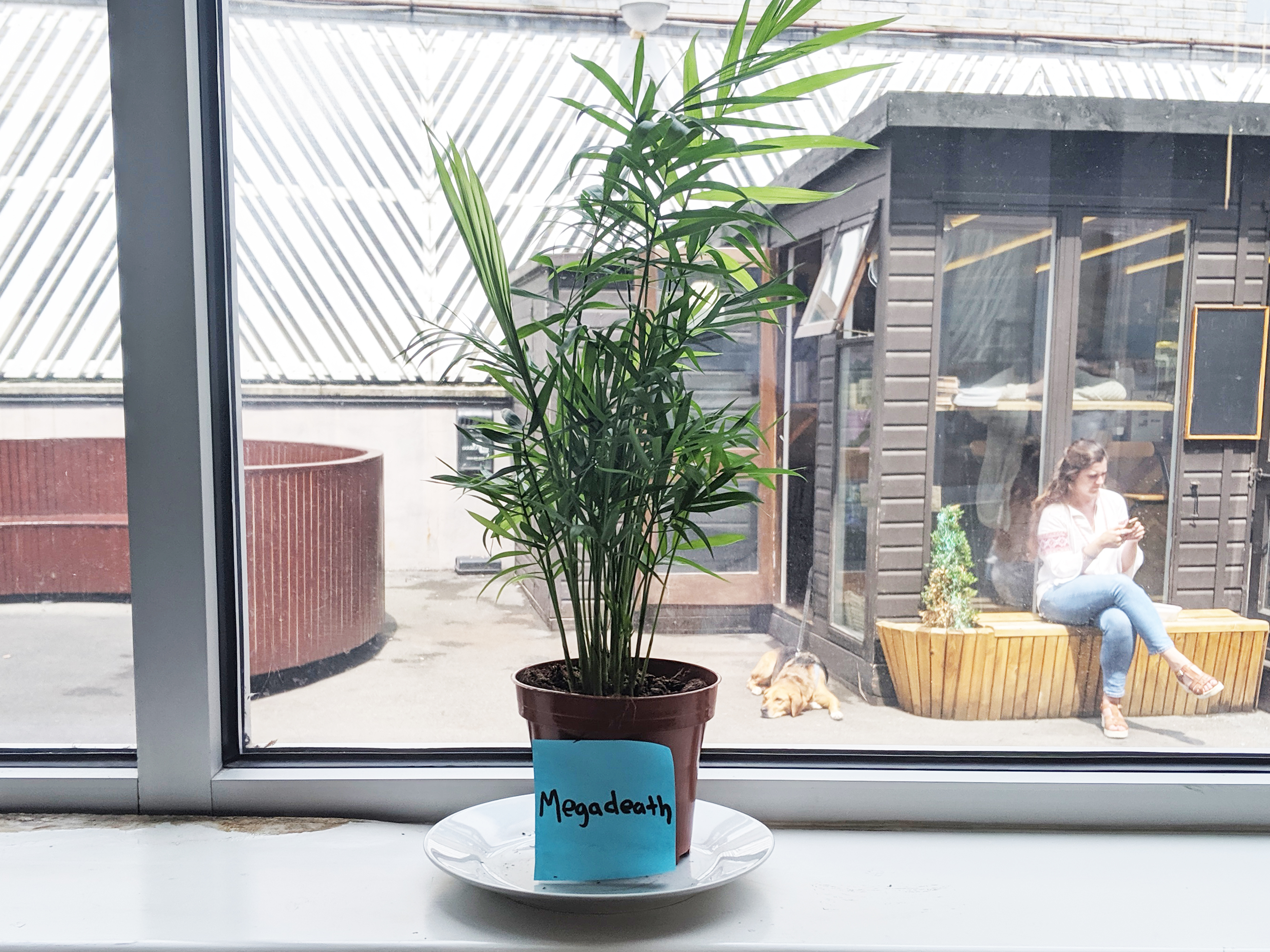Imagine you’re a few specks of space dust floating along a rainbow road. You there yet? Okay, then you’re not far off from what one classically 70s album, literally written for plants, sounds like. Composer Mort Garson released Mother Earth’s Plantasia in 1976, right when an appreciation for houseplants and indoor ‘jungles’ was taking off. His new-age creation wasn’t widely respected at the time and Garson remained a bit of an anonymous figure for most of his life. But over the decades, it’s built up a firm cult following, loved for it’s lush kaleidoscopic vision that teeters between psychedelia, ambient and the soundtrack to Ecco the Dolphin. You could see it as a precursor to Brian Eno, in his texture-heavy moments.
Soft and loving, Plantasia is designed – as the front cover describes – to be “warm earth music for plants… and the people who love them.” Each track corresponds to a different member of the plant family – “Symphony for a Spider Plant”, ”You Don’t Have to Walk a Begonia”, “Swingin’ Spathiphyllums” – and the idea is that the more you play the music to your plant, the better life it will have.
Garson may not have received credit where credit was due in 1976. But now that houseplants are basically being sold as millennial self-care, and other new-age-era obsessions are seeping back into public consciousness, it makes sense that label Sacred Bones have elected to re-release the album vinyl. To mark the occasion, we decided to test the album’s theory by buying two plants. One, owned by VICE’s Daisy Jones, would be played Mother Earth’s Plantasia. The other, looked after by VICE’s Ryan Bassil? Megadeth. The aim is to see which plant thrives, whether Plantasia works, and to take a step back in time to when people first encountered the album.
Videos by VICE
To kick off: the plant shop had named both of our plants ‘Sharon’ on their site. Not our choice. Millennial plant-selling websites have cutesified nature. Instead of letting them stand up tall with their beautiful and extravagant names they’re demoted to the level of one of the Osbournes, or your mate at the pub or whatever. Really, the official name of Sharon is a ‘Chamaedorea elegan’, more widely known as the ‘parlour palm’. There aren’t any songs that correspond to the parlour palm on Plantasia, but we weren’t allowed to spend over a tenner and these were the cheapest. Aren’t they gorgeous?
Then, to be scientific: we placed each plant on a windowsill at the entrance to the VICE office. They would be watered every few days, per instruction, not in direct sunlight. Then using headphones, one would be played Plantasia and the other Megadeth’s new 35-song album Warheads On Foreheads, for two hours in the morning and two hours in the afternoon for one week in total. Here’s what they looked like at the beginning of the experiment:


Yes, Megadeth is spelled wrong. Then, here’s what they looked like one week later:


Daisy’s thoughts on her Sharon:
When I first set about this experiment, I envisioned my plant’s leaves growing greener and more luscious with every bubbling Moog synth and soft, earthy soundscape. In the days following, as I fastened the headphones to the leaves, I felt as though I was feeding my plant its third most essential nutrient, after light and water. I imagined that as the week drew to a close, the Chamaedorea would be crawling up the office walls, waving at passers by, the leaves becoming huge and bouncy, it’s stalk swaying to the music.
But honestly, my plant doesn’t look that much different to how it did at the beginning. It’s still standing upright, it’s leaves are still perky and green, the soil isn’t too soggy or dry. Considering all other plants I’ve owned have died, at least this one is still alive, so maybe I can thank Mother Earth’s Plantasia? That said, it doesn’t look that different to Ryan’s plant, which had been listening to Megadeth all week. Maybe if I squint closely, the leaves of his plant look slightly more curly and limp than mine, but that could be wishful thinking? To conclude: my plant is not dead and that is a success. But is listening to Plantasia any more beneficial than Megadeth?
Ryan’s thoughts on his Sharon:
Well, Daisy – I had similar, if opposite thoughts, in that I thought the music would directly impact my plant. Science has proved that music has the ability to affect plant’s growth, whether through vibration or vibes. So, given that listening to Megadeth makes me feel as if I’m on a hell-themed super-speed rollercoaster into hell, perhaps it would excite my plant a little at best and at worst, make it a little sickly. But nada. It did not respond to “Train Of Consequences”. It was not interested in “Washington Is Next”. It absolutely did not give a shit about bonus track “She-Wolf Remastered 2004 / Remixed”.
Of course, this isn’t the most conclusive science experiment ever – we only did it for one week, and the constant general noise of the office probably didn’t help things. That said, I’m sure there are definite potential benefits to playing Plantasia on repeat, all day – whether to your plants or to yourself (we’re both live and living, right?). It’s a meditative, dreamy record – the pure sonic antithesis of stress – and we already know that relaxation is fundamentally good for our health. In that way, Plantasia might not make your plant suddenly sprout new leaves (as this experiment shows!) but it does promote a sense of calm and wellbeing, and that can only be a positive thing, whether you’re palm, human or something in between.



